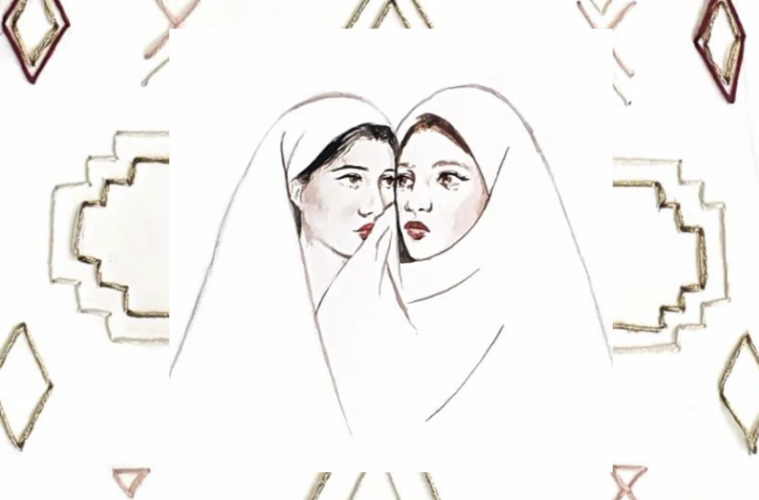Artworks and words by: Khaddouj Barghout
This article is part of the “The Wawa Complex” issue
Immortal Aphrodite, on your intricately brocaded throne,
Child of Zeus, weaver of wiles, this I pray:
Dear Lady, don’t crush my heart
with pains and sorrows.
SAPPHO
There is a lot of sweetness in Sappho’s poems and in the words of others about her work, just as there is a lot of bitterness to be said about the author of this small but acclaimed oeuvre.
Sappho’s words inspire the new series of work by Khaddouj Barghout – an artist living in Rotterdam (The Netherlands) – who channels Sappho’s verses through her paintings. Beyond this, Barghout also plays with different ways of looking at the female body, often culturally or ideologically determined.
The women portrayed by Barghout – whether alone or together, whether small and confined or large and floating in space – exist in relation to themselves, each other, and the viewer. In her words, she leaves it to the viewer:
To view the tension and sensuality either through a ‘Sapphic view’ or from the dominant, heteronormative perspective. Throughout history, romantic love and intimacy between women have often been removed or obscured, for example by labeling cohabiting lovers as ‘friends’ or ‘roommates.’ This typical image of two women who are romantically involved, which we have consciously and unconsciously constructed, continues to this day. It’s as if this love is not to be taken seriously, or is merely entertainment for the male gaze; take, for example, the majority of ‘lesbian’ porn.
North African culture also plays an important role in some of Barghout’s works. It gives context to the work and the taboos it is trying to address, including notably the perception(s) of the female body and more specifically the Sapphic perspective.
Fortunately, the women in Barghout’s work live in a world in which they are completely free from the heteronormative and male gaze.



